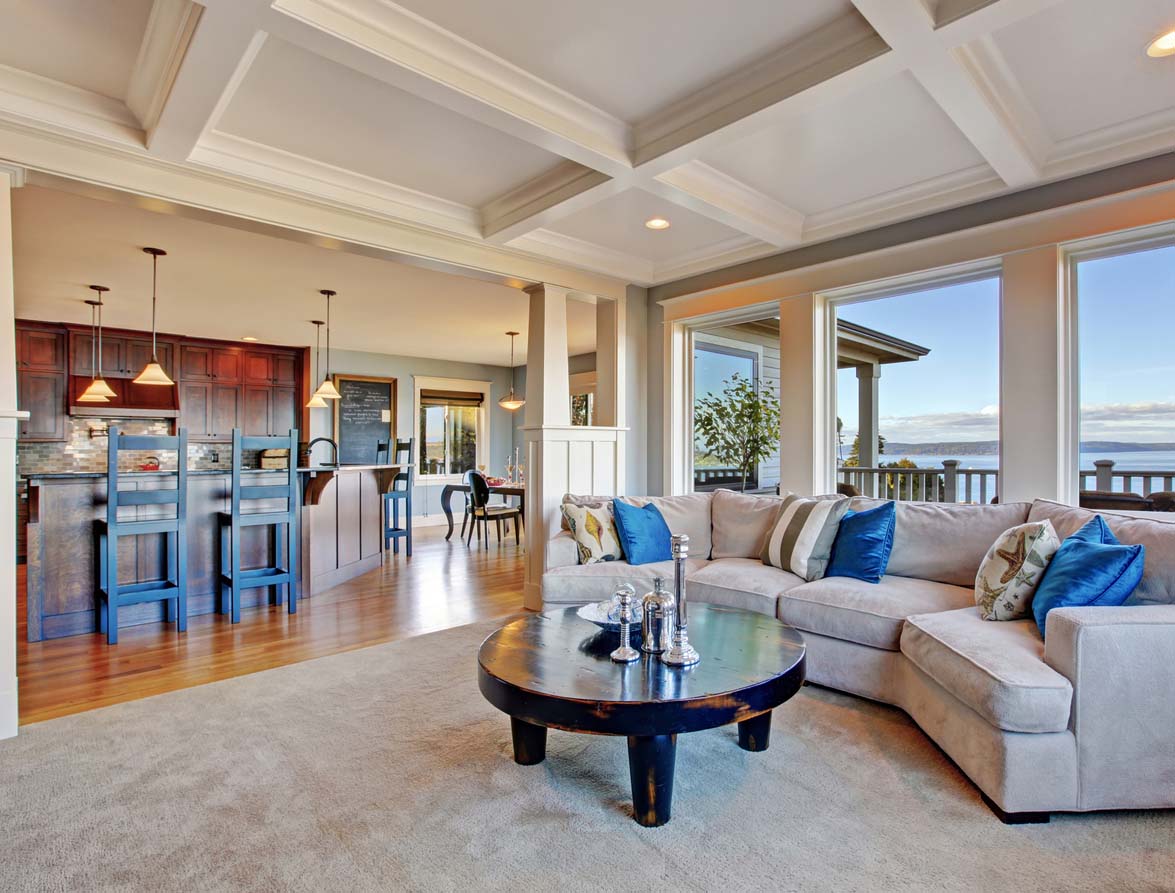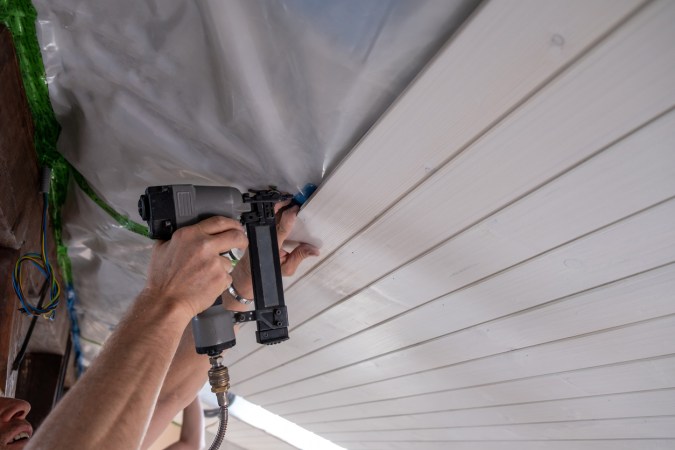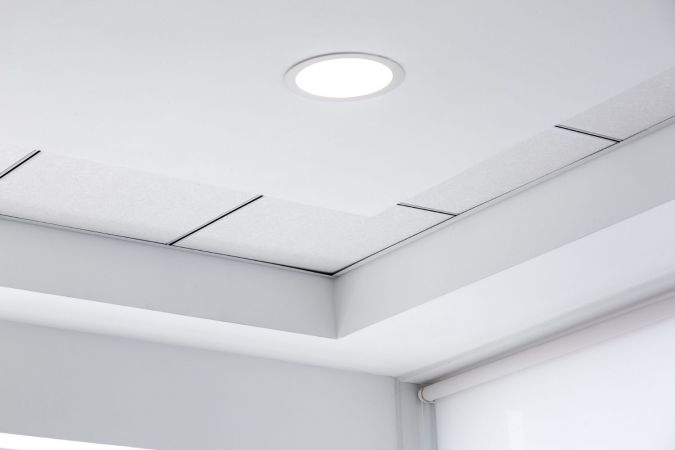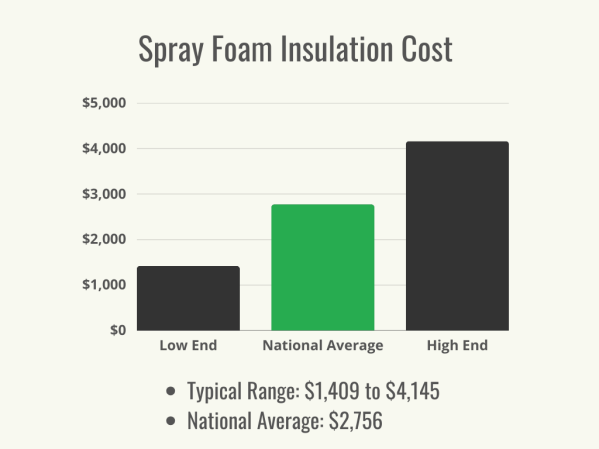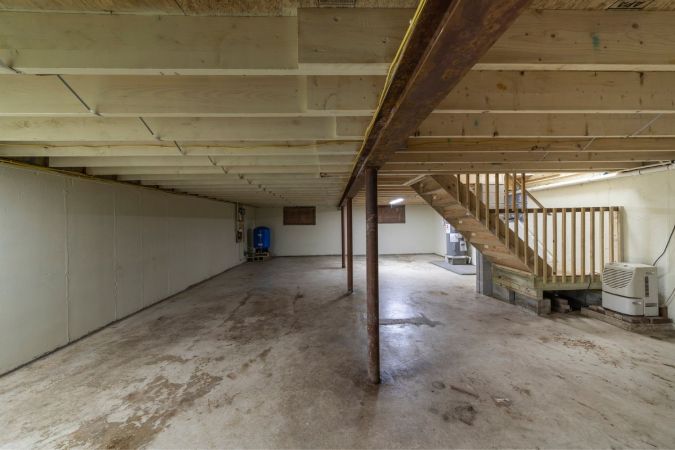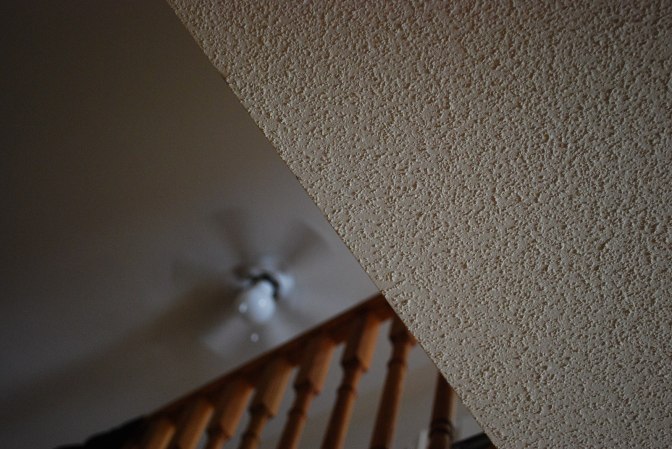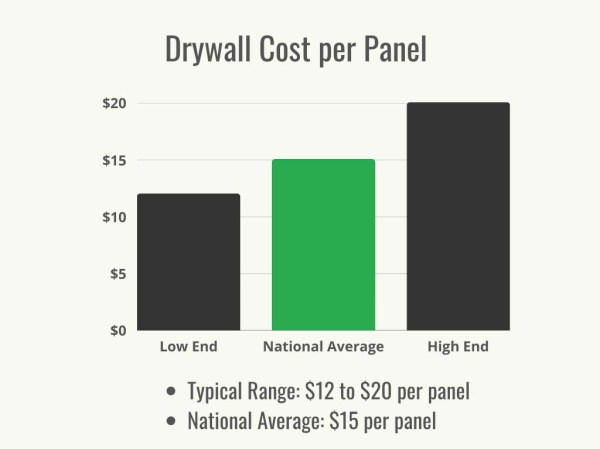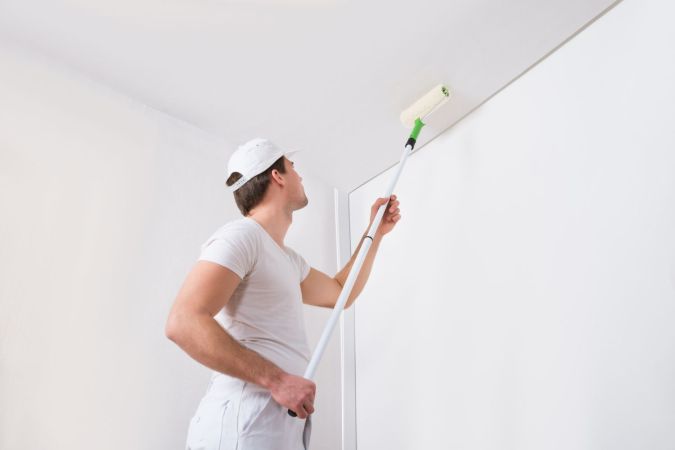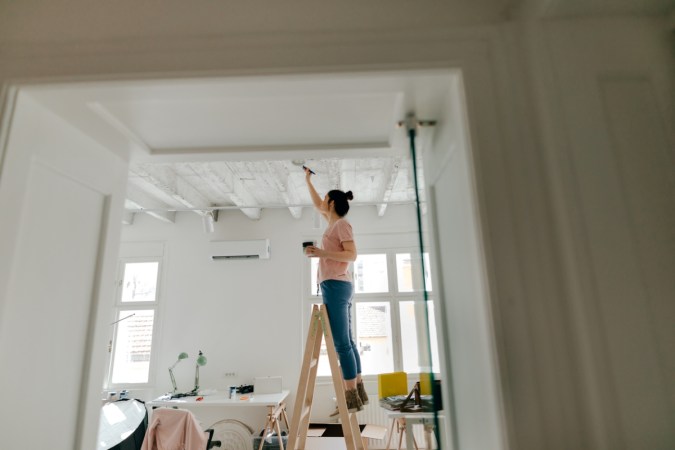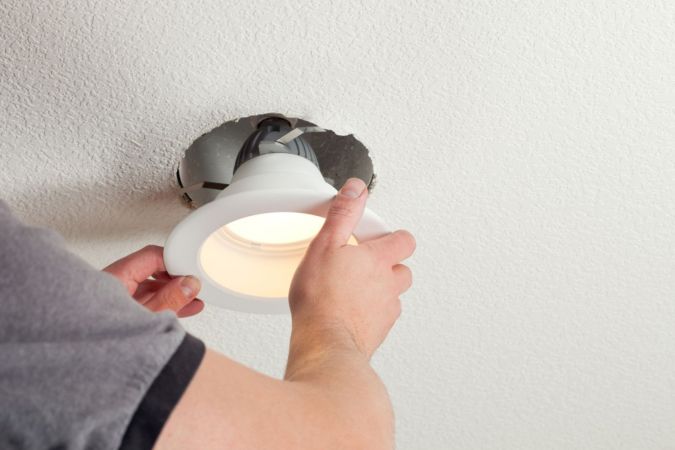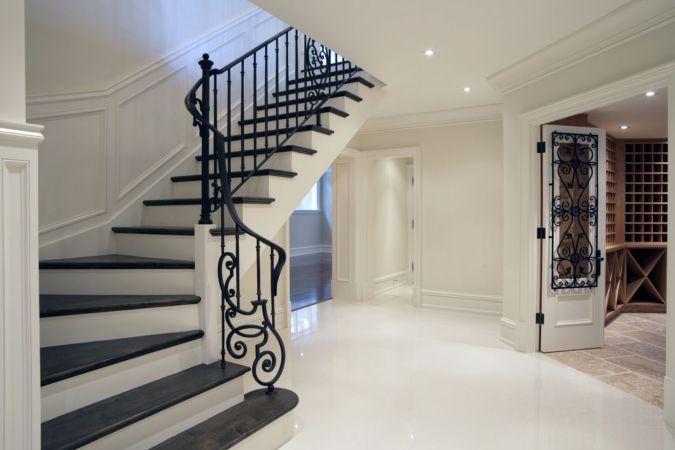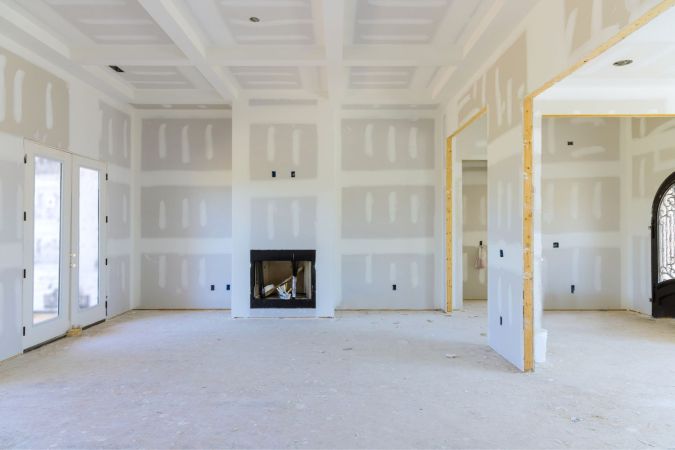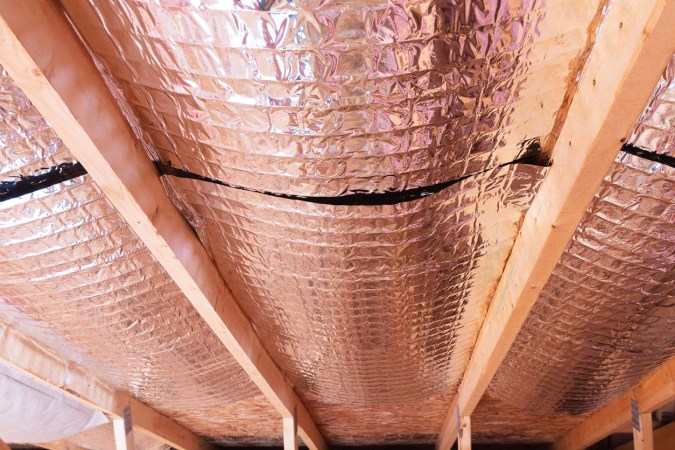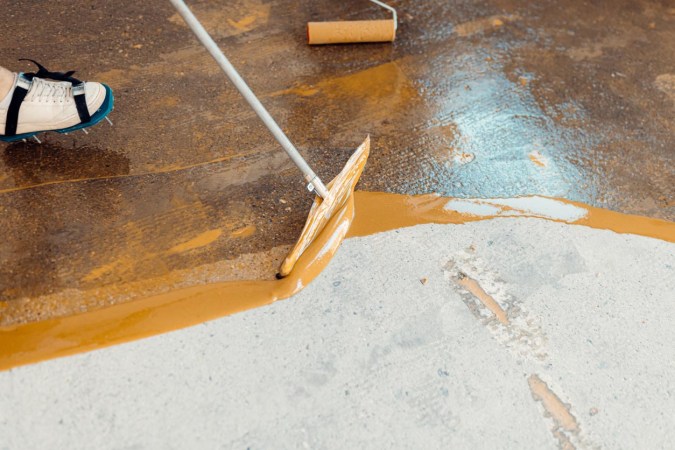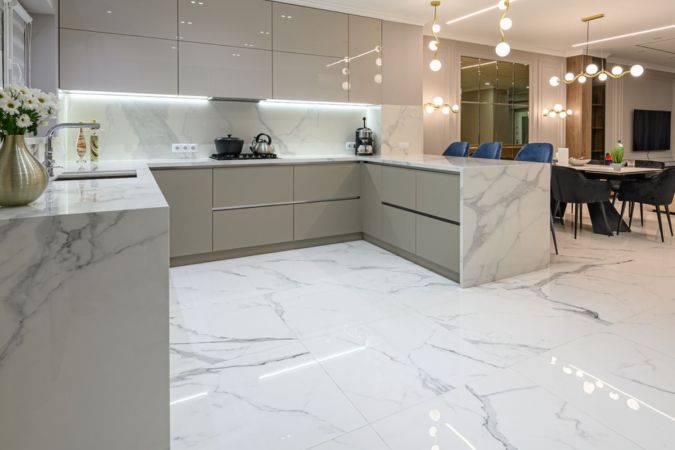We may earn revenue from the products available on this page and participate in affiliate programs. Learn More ›
Highlights
- Most coffered ceilings cost between $3,000 and $4,500, though most homeowners will spend an average of $3,750 on a 150-square-foot ceiling.
- A coffered ceiling price is largely dependent on the material selected, the size of the room, customization options, and labor rates.
- Homeowners who install a coffered ceiling in one or more rooms enjoy a more durable ceiling, better sound absorption, an illusion of added height, increased home value, and improved aesthetics.
- While there are DIY kits available, working overhead on ladders with heavy materials is a difficult task for most homeowners. This is why many prefer to hire a pro to get the job done in a timely manner with high-quality results.
A coffered ceiling can transform a traditional room into a showpiece. Coffered ceilings add depth and dimensional character through recessed panels that can be decorated to suit the home’s design aesthetic. “[A coffered ceiling] not only adds an elegant look to a room but can also help a room with very high ceilings feel more cozy,” says Tony Caciolo, president of Monogram Custom Homes in Center Valley, Pennsylvania. “Depending on the level of detail and finish, it can add an old-world, sophisticated look to a room or a more sleek contemporary feel.”
Just how much does a coffered ceiling cost? The final price tag depends on several factors, including how large the ceiling is and the chosen material type. For a 150-square-foot ceiling, homeowners will want to budget between $3,000 and $4,500, with an average cost of $3,750, according to HomeAdvisor. The cost will vary based on the size of the ceiling, the type and design selected, labor rates, and several other factors.
What is a coffered ceiling?
Coffered ceilings are easily recognized by the series of recessed panels in grid patterns ranging from squares to rectangles and octagons. While historically found in buildings such as cathedrals or libraries, they’ve become a popular element of modern architecture. Coffered ceilings can be installed in bedrooms, living rooms, home offices, and other rooms.
Both a wood coffered ceiling and one made from synthetic materials offer several advantages over a standard ceiling: aesthetic appeal, improved acoustics, and the potential for increased property value.
Factors in Calculating Coffered Ceiling Cost
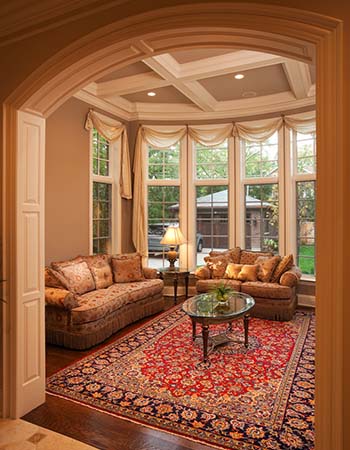
When homeowners are budgeting for a coffered ceiling, there are several factors to consider. Material choice, room size, and labor all play a part in determining the cost to install coffered ceilings.
Material Type and Design
Ceiling coffering can be constructed out of several different types of materials, including hardwood and manufactured materials. The type chosen will have a huge impact on the total price.
Hardwoods such as cherry, walnut, or mahogany can establish a luxurious tone, but they tend to require a higher budget. More cost-effective materials such as drywall, plywood, or pine can still create a beautiful ceiling—but at a lower price point.
“If the ceiling is going to be painted, it should be poplar and not pine,” advises Caciolo. “Pine shrinks way way too much and will cause gaps to form. If the wood is going to be stained, almost any hardwood will work, but choices are usually oak or mahogany.”
Homeowners can also choose from several different coffered ceiling designs. Contemporary ceilings usually use drywall and feature minimalistic patterns, making them quite affordable. Traditional designs feature carved hardwood beams and minimal decoration. Finally, rustic coffered ceilings are often the most expensive option as they are built using expensive woods and can include ornately carved designs.
| Type of Design | Average Cost Per Square Foot (Materials Only) |
| Contemporary | $2 to $7 |
| Rustic | $5 to $30 |
| Traditional | $2.50 to $20 |
Room Size
Room size is another essential factor that affects the budget for a coffered ceiling. As with most types of ceilings, larger rooms require more materials, installation time, and labor to update the ceiling. On the other hand, smaller rooms require less materials and time, which translates into lower costs overall.
The average coffered ceiling cost per square foot ranges from $17 to $60, including materials and contractor fees. A standard bedroom size is about 11 feet by 12 feet, or approximately 132 square feet. The cost of adding a coffered ceiling to a room of this size can range anywhere from $2,244 to $7,920.
Labor
The cost of coffered ceiling installation can range significantly due to local labor rates. A ceiling contractor typically offers inclusive pricing, meaning the cost will combine labor and materials. That price is usually between $17 and $60 per square foot, although a typical average is between $20 and $30 per square foot.
A more experienced contractor will charge more than a newer contractor who has done fewer ceiling projects. Site preparation may also influence labor costs. For example, the cost to remove a popcorn ceiling is likely to boost a coffered ceiling budget. Job scope also influences labor rates, with more complex installations often costing more than straightforward designs.
Ceiling Repairs
If ceiling repairs are needed, these ceiling repair costs will also need to be factored into installation prices. Before a coffered ceiling can be installed, the existing ceiling may need to have water damage, cracks, or structural concerns addressed.
While minor cosmetic repairs may be DIY-friendly projects, it’s recommended to hire a professional is recommended for ceilings with more significant issues such as mold or if there are structural concerns. Neglecting ceiling repairs entirely and proceeding with a coffered ceiling installation can cause safety issues since damaged ceilings can collapse if left to deteriorate further. Homeowners can expect to pay between $50 and $100 per square foot for ceiling repairs or $200 to $500 total for minor repairs.
Customizations and Finishes
Coffered ceilings are made even better with customizations, allowing homeowners to turn a simple coffered ceiling into something truly spectacular. However, adding extra customizations or special finishes comes with additional costs.
- The standard checker-patterned look can be achieved with soffits instead of beams at a cost of $1 to $3 per linear foot.
- Tin tile panels offer a unique look with a cost of $1 to $10 each. Most coffered ceilings require up to 40 tin tiles since they are usually manufactured in 2-foot-by-2-foot sizes.
- Ceiling medallions each cost between $10 and $690, and they can create luxurious mounting points for chandeliers.
- Trim costs $1 to $10 per linear foot, while a coffered ceiling with crown molding costs $8 to $15 per linear foot.
- The cost to paint a ceiling or add stain ranges from $1 to $2.50 per square foot.
- Recessed lights in panels or along beams can cost about $360 per fixture for labor and materials.
- Finials can be installed at the intersection of each cross beam to add a subtle, decorative flair to a coffered ceiling. They cost $15 to $110 per piece plus labor.
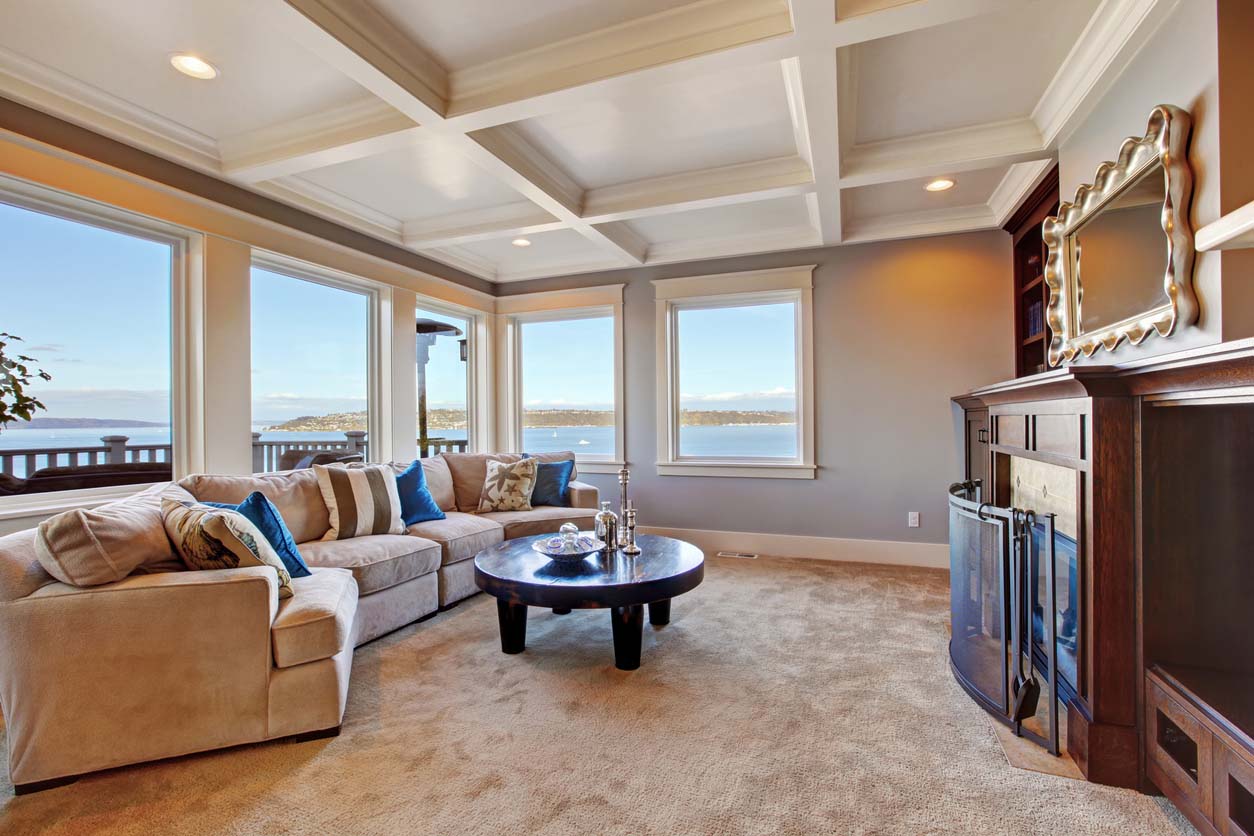
Coffered Ceiling Cost by Type of Material
The average cost of coffered ceilings is greatly influenced by the type of material used. Homeowners can choose from various classic wood options or a manufactured material. Investing in a coffered ceiling isn’t only about style but also proper budgeting, so it’s helpful for homeowners to know the average cost for each kind of material.
| Type of Material | Average Cost per Square Foot (Materials Only) |
| Cherry | $7 to $10 |
| Drywall | $2 to $3 |
| Fiberboard | $6 to $15 |
| Mahogany | $17 to $30 |
| Maple | $5 to $15 |
| Oak | $4 to $8 |
| Pine | $3 to $7 |
| Plywood | $3 to $4 |
| Polyvinyl Chloride (PVC) | $15 to $20 |
| Poplar | $2.50 to $7 |
| Walnut | $10 to $30 |
Cherry
Cherry is a popular choice for coffered ceilings because of its versatility. It complements all types of interior styles from traditional to contemporary with a rich color that can add warmth and elegance to a space. Coffered ceiling kitchens are just one example of how this material can transform a space with its natural characteristics.
The cost of cherry wood for a coffered ceiling ranges from $7 to $10 per square foot. Its pricing offers a balance between affordability and luxury when compared with other natural woods. However, this price range is for materials alone. Cherry wood is heavy, hard to work with, and best installed professionally. As a result, labor fees can significantly boost the overall installation cost.
Drywall
Drywall is the most economical material type for coffered ceilings. Budget-conscious homeowners appreciate its price range of $2 to $3 per square foot.
Beyond its cost-effectiveness, drywall offers a contemporary finish that makes it popular for those envisioning a modern aesthetic for their coffered ceiling. Drywall is also lightweight and easier to install than other materials, making it ideal for homes with shallow ceilings. Alternatively, it’s too light to be installed on a deeper ceiling without a metal structure to support the weight. Drywall also adheres to primer and paint exceptionally well, offering nearly endless customization options.
Finally, drywall is widely available and offers straightforward installation that can save on labor costs. Homeowners searching for an affordable and contemporary coffered ceiling material will find that drywall is often the best choice.
Fiberboard
Another manufactured option is fiberboard. The material is created by combining wood fibers with wax and resin binder. With a price range of $6 to $15 per square foot, fiberboard is a cost-effective option that still offers an attractive ceiling design.
Fiberboard is also a versatile material choice. Since it has a smooth surface, it also takes paint well, making it easy to achieve a customized, flat coffered ceiling design. The material is also ideal for areas with varying humidity levels, such as bathrooms. Fiberboard is stronger and more resistant to moisture than other material options.
Mahogany
For homeowners who prize luxury in a room’s design, installing mahogany is the perfect choice for a coffered ceiling. It offers exquisite color, rich grain, and a distinct appearance among hardwoods.
Mahogany is a premium choice with a price tag to match. For materials alone, the cost of mahogany for coffered ceilings ranges from $17 to $30 per square foot.
Despite its cost, mahogany is highly sought after. This can make it more difficult for contractors to secure enough material for a coffered ceiling project, prolonging installation timelines.
However, many homeowners are willing to wait since the benefits of mahogany go beyond aesthetics. The material has natural moisture-resistant properties and is known for its exceptional durability, making it an investment with a high return.
Maple
Maple is another example of a durable hardwood ideal for coffered ceiling construction. It’s highly receptive to both paint and stains, offering versatile customization options. With minimal grain, maple gives a sleek and refined appearance for a clean and modern aesthetic.
Falling within a moderate price range, maple runs between $5 to $15 per square foot. The material is known for being a durable hardwood that maintains its integrity over time, so homeowners are often willing to invest in maple because of its expected lifespan. While maple offers a smooth and elegant look, installing it can be challenging. Its weight can complicate the process, so the installation is best performed by a professional.
Oak
Materials for an oak coffered ceiling cost between $4 and $8 per square foot. Oak provides a natural aesthetic and is a favored material for coffered-style ceilings. It’s also known for being easy to work with. Because the installation process for oak is easier than for other wood varieties, oak offers a potential for savings on labor costs.
Oak has a naturally smooth finish and is receptive to both paint and stains. An oak coffered ceiling can be customized to match an existing color scheme or serve as a stunning focal point with a unique pattern.
While oak is a desirable material for coffered ceilings, homeowners will need to consider that the natural variation in oak colors may pose challenges in achieving a uniform shade throughout the ceiling. However, these variations can add to its charm as well.
Pine
Coffered pine ceilings are a cost-effective material option that typically range from $3 to $7 per square foot for materials. Pine is readily available in various widths and lengths that make it easier to work with, offering potential labor savings.
Pine is known for its brightening effect, making a space feel more open and inviting. The material can also be customized with paint in various shades and textures.
However, it’s important to note that pine is a softwood and lacks the depth and character found in hardwood. If a homeowner is after a rustic wood look, pine may not fully meet expectations. Despite this, its affordability and ability to brighten a room make it a popular choice for coffered ceilings.
Plywood
Though it may not be the first material that comes to mind when visualizing a stunning coffered ceiling, plywood is a great option. It’s easy to work with and readily available, making it ideal for DIY and professional installations.
Plywood is also a cost-effective choice, with a price range of $3 to $4 per square foot before installation. Before jumping on the plywood bandwagon for the savings, though, homeowners will want to be aware of a few potential drawbacks.
Since plywood tends to have a rougher surface, this may take away from the desired finish of a coffered ceiling. Opting for professional installation can ensure a homeowner’s plywood ceiling attains a polished and sophisticated appearance.
Polyvinyl Chloride (PVC) Panel
PVC panels cover the entire ceiling and provide a unified, seamless appearance. These PVC panels are also highly decorative and open up design options that are more intricate and visually appealing than with paint alone.
All of these features come at a premium cost, though, with PVC panels ranging from $15 to $20 per square foot. It’s worth noting that PVC panels do require special installation techniques, and fewer contractors have experience with this material than other types of wood.
Poplar
Poplar stands out as a more affordable option relative to similar wood materials. Prices range from $2.50 to $7 per square foot. Compared with similar wood materials, poplar stands out as a low-cost option that can still achieve a stylish look. The material is smooth, easy to work with, and takes paint and stain well.
While poplar is user-friendly during installation, installers need to exercise extra care since the wood tends to splinter and break more easily than some other materials. Savvy contractors will use gentle cutting and sanding techniques and predrill holes to minimize the risk of breakage during installation.
Walnut
Walnut is a luxurious choice for a coffered ceiling, renowned for its rich color and distinctive grain patterns. Homeowners can expect to pay between $10 and $30 per square foot for walnut, not including the cost of installation.
It’s important to note that a walnut coffered ceiling installation requires specialized tools and techniques, which can quickly increase the overall project cost. However, walnut offers a good return on investment thanks to the material’s durability and timeless elegance. Like other hardwood, walnut requires ongoing maintenance to preserve its appearance and integrity. Regular dusting and periodic polishing are recommended to extend the lifespan.
Benefits of Choosing a Coffered Ceiling
Coffered ceilings offer a variety of benefits, which is why they’re such a popular choice for homeowners and designers. From durability to improved home value, coffered ceilings make sense for homeowners who prefer to invest a little extra money on an often-overlooked area of the home.
Durability
Coffered ceilings are typically built with quality materials, such as hardwood. The design of a coffered ceiling also enhances its structural integrity. When built with durable materials and a well-constructed framework, coffered ceilings are exceptionally resilient to wear and tear.
Over time, homeowners tend to find that a coffered ceiling resists common issues (like sagging or warping) better than other types of ceilings. This durability can reduce maintenance costs. Homeowners who opt for a traditional drywall ceiling instead of a coffered design may find the aesthetics of their space declining over time, and they may face severe structural issues after a water leak, not to mention the inconvenience and cost of subsequent repairs.
Sound Absorption
Rooms with poorly insulated ceilings are likely to experience echo and reverberation. This can lead to less privacy, as sounds carry easily from one room to another. More importantly, rooms like home theaters are less functional without the proper sound absorption.
However, a coffered ceiling living room’s sound absorption can help reduce ambient noise to the rest of the home. Recessed panels are often featured in coffered ceilings, and sound-absorbing materials such as acoustic panels can help create a quieter and more comfortable living environment. While appropriate for nearly any room in a house, coffered ceilings are perfect for home theaters or music rooms because of their sound absorption qualities.
Illusion of Added Height
Coffered ceilings make a room seem taller and more spacious than it actually is. The beams in coffered ceilings create vertical lines that provide an illusion of added height. Homeowners can choose to customize the ceiling’s pattern to enhance or diminish the perceived height, creating either a high- or low-profile coffered ceiling.
The illusion of added height can make a room feel more open, spacious, and inviting. Adding coffered ceilings throughout a home can make it feel as though more square footage has been added to the house without the need for an addition.
Increased Home Value
A home with coffered ceilings may be worth more than one without, depending on the style and condition. Potential buyers often find homes with coffered ceilings more attractive, making the property worth more in their eyes. Unique and customized ceilings may increase values even more.
Homeowners who invest in rustic or modern coffered ceilings throughout their homes are highly likely to see a return on their investment during a resale. By attracting more potential buyers, they may attract more offers from discerning buyers.
Improved Aesthetics
A coffered ceiling, especially a beadboard coffered ceiling, can significantly enhance the visual appeal of a room. Homeowners also have the ability to personalize their design to match their aesthetic preferences. Customization allows a coffered ceiling to be a subtle complement or the main focal point of a room.
A home with improved aesthetics throughout, including the ceiling, is warmer and more welcoming. Without a unique ceiling, the home can still be beautiful, but it lacks the architectural interest and appeal of a coffered ceiling that many homeowners appreciate.
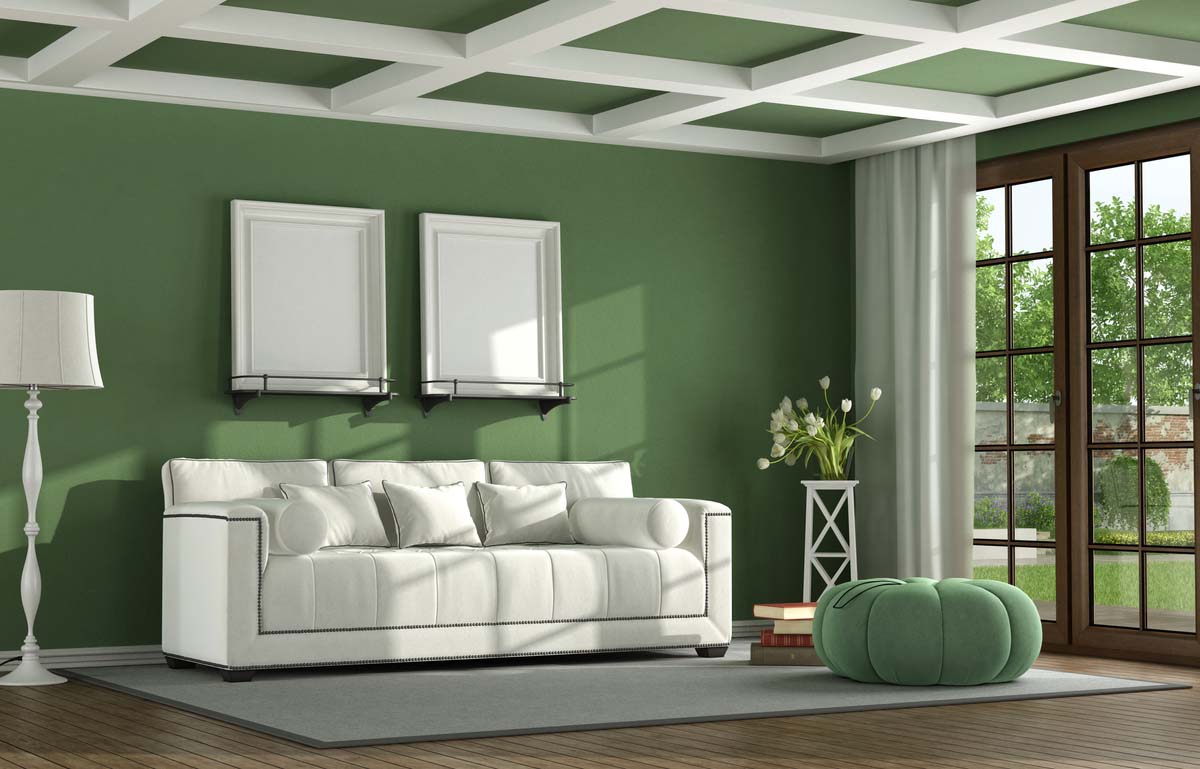
Coffered Ceiling Installation: DIY vs. Hiring a Professional
Can a homeowner install a coffered ceiling? “If the homeowner is good with carpentry, possibly,” says Caciolo. “It is typically a two-person job since the boards are long. But proper butt joints and miters must be made using table saws, miter saws [and so on] to give the ceiling a professional look.”
There are a few benefits to a DIY coffered ceiling, including cost savings, but there are numerous cautions and considerations as well.
- Safety concerns: It’s always a risk for a novice to work with power tools and heavy materials on ladders.
- Mistakes: Coffered ceiling designs are often intricate, and errors can be expensive to correct down the line.
- Equipment: Purchasing or renting power tools adds to the project cost.
- Time: Projects like this will always take much longer than expected, which inconveniences everyone in the household who has to navigate around the construction mess.
While there are coffered ceiling kits that can make a DIY job a bit easier for someone new to home improvement, there are a multitude of benefits that come with working with the best home renovation contractors (such as Mr. Handyman).
- Expertise: Professionals bring experience, ensuring correct installation and minimizing mistakes. They can also help with more complex scenarios, such as structural issues or mold on the ceiling.
- Efficiency: The occupants of a home can return to normal faster by hiring a pro rather than living in a construction zone for weeks on end.
- Safety measures: Professionals have the necessary equipment and gear to handle the job safely.
While hiring a professional does involve labor costs, it also ensures a less stressful and more successful outcome. Homeowners find that their time is saved for other important tasks, and they appreciate the quality of the installation that will last for years to come.
How to Save Money on Coffered Ceiling Cost
Installing a coffered ceiling will take a few thousand dollars or more to complete. There are several helpful tips for homeowners to maximize their financial resources without compromising the quality or style of their new coffered ceiling.
- Plan and budget: Homeowners can start with a clear plan and budget to avoid unnecessary expenses. It’s recommended to identify the scope of the project and use a coffered ceiling cost calculator to ensure every element is accounted for in the budget.
- DIY for simple tasks: It’s possible to DIY simpler tasks such as painting or minor repairs to save on labor costs.
- Compare multiple quotes: Homeowners are always encouraged to obtain quotes from multiple contractors and compare their rates, experience, services, and reviews. Rather than simply going with the least expensive, homeowners can look for the professional that offers the most value.
- Choose cost-effective materials: Opting for less-expensive materials, such as coffered ceiling tiles, can keep material costs lower, especially when homeowners are updating multiple rooms.
- Limit customizations: While customizations enhance aesthetics, limiting intricate details and elaborate designs can help homeowners control costs.
Questions to Ask About Coffered Ceiling Installation
Homeowners can ensure success during a coffered ceiling installation by asking professionals the right questions before hiring them.
- How much experience do you have with coffered ceilings?
- Do you have a list of references or a portfolio of past work I can refer to?
- Are you licensed and insured for this type of work?
- What materials do you suggest for my ceiling and preferred design?
- Are there any alternative designs that might be more cost-effective?
- How long will the installation take, and how soon can we schedule it?
- Do I need to be home during the installation?
- Will you handle securing any permits or scheduling inspections?
- How do you protect my property during the installation?
- How will you handle any potential challenges or issues that may arise during the installation?
- What are your payment options and requirements?
- What care and maintenance do you recommend to preserve my coffered ceiling? Do you provide any of these services?
FAQs
Coffered ceilings are classic and sophisticated. With a grid-like pattern of sunken panels, coffered ceilings can transform the appearance of bedrooms, kitchens, and living spaces. Additionally, coffered ceilings offer acoustic benefits and can add significant value to a property, making the cost a wise investment.
The answers to several frequently asked questions can provide homeowners additional information and insight about whether the cost of a coffered ceiling is worth it to provide the right architectural update in their home.
Q. What are the disadvantages of a coffered ceiling?
A coffered ceiling has three main disadvantages: price, function, and form. Depending on the size of the ceiling and the materials chosen, coffered ceilings can cost as much as $30 per square foot. Many homeowners do not care to spend so much money on a ceiling and opt for a cheaper material. Coffered ceilings are also primarily decorative and sometimes require additional support to prevent structural weaknesses.
Finally, adding a coffered ceiling to a low ceiling can make a room feel smaller. “One of the advantages can also be a disadvantage,” says Caciolo. “A coffered ceiling can sometimes make a room feel small because it lowers the ceiling. Cost is also a negative since [a coffered ceiling] is one of the most expensive trim details in the house.”
Q. What is the minimum height for a coffered ceiling?
A coffered ceiling should only be installed in rooms with the proper clearance. The minimum height for a coffered ceiling is 9 feet tall, which helps to avoid space constraints. If a homeowner wishes to install a coffered ceiling in a room that doesn’t meet the height requirements, they can speak with a contractor about raising the ceiling or choosing a different type of ceiling to install. For instance, the cost of vaulting the ceiling would add an average of $19,900, but a vaulted coffered ceiling may not appeal to everyone.
Q. What is the difference between a waffle ceiling and a coffered ceiling?
Waffle ceilings resemble the shape of a waffle, with beams crossing each other to create a repeating pattern. Waffle ceilings are often used in modern homes and can be made from wood or plaster. On the other hand, a coffered ceiling consists of three-dimensional octagon, square, or rectangular grid panels that are typically sunken or recessed.
Q. Where should coffered ceilings be installed?
A coffered ceiling can be installed in any room of a home as long as the existing ceiling structure can support the additional weight with enough clearance. However, from a design perspective, coffered ceilings are perfect for living rooms, studies, home offices, libraries, bedrooms with high ceilings, dining rooms, and home entertainment rooms.
Sources: HomeAdvisor, HomeGuide, Fixr
